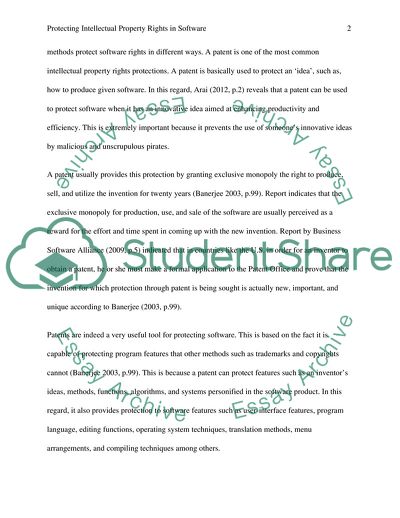Cite this document
(Protecting Intellectual Property Rights in Software Coursework Example | Topics and Well Written Essays - 1250 words - 1, n.d.)
Protecting Intellectual Property Rights in Software Coursework Example | Topics and Well Written Essays - 1250 words - 1. https://studentshare.org/information-technology/1799764-protecting-intellectual-property-rights-in-software
Protecting Intellectual Property Rights in Software Coursework Example | Topics and Well Written Essays - 1250 words - 1. https://studentshare.org/information-technology/1799764-protecting-intellectual-property-rights-in-software
(Protecting Intellectual Property Rights in Software Coursework Example | Topics and Well Written Essays - 1250 Words - 1)
Protecting Intellectual Property Rights in Software Coursework Example | Topics and Well Written Essays - 1250 Words - 1. https://studentshare.org/information-technology/1799764-protecting-intellectual-property-rights-in-software.
Protecting Intellectual Property Rights in Software Coursework Example | Topics and Well Written Essays - 1250 Words - 1. https://studentshare.org/information-technology/1799764-protecting-intellectual-property-rights-in-software.
“Protecting Intellectual Property Rights in Software Coursework Example | Topics and Well Written Essays - 1250 Words - 1”. https://studentshare.org/information-technology/1799764-protecting-intellectual-property-rights-in-software.


